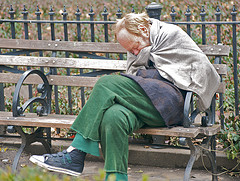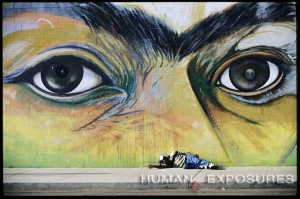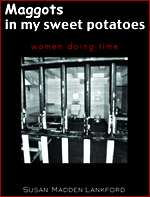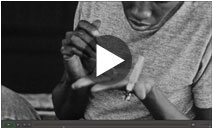 As you walk through the streets of San Diego, or any other American city, you will see the homeless. People living rough in the urban landscape. Each one is somebody’s brother, mother, son, cousin, or spouse. In addition, many of them had fought for our country.
As you walk through the streets of San Diego, or any other American city, you will see the homeless. People living rough in the urban landscape. Each one is somebody’s brother, mother, son, cousin, or spouse. In addition, many of them had fought for our country.
Dylan Mann, a contributor to Voice of San Diego, says it well:
You see them in the medians at intersections and at the bottom of freeway off-ramps. Suntanned and weary in camouflage pants, they hold magic-markered signs announcing: ‘HOMELESS VET — ANYTHING HELPS — GOD BLESS.’ And you feel empathy for them, don’t you? No matter what you think of our nation’s military campaigns, it’s undeniable that here before you is a person that once served our country, but now he sleeps outside and isn’t sure when he’ll eat next.
Because of good weather and a high cost of living, San Diego has a lot of homeless people. There are 8,500 homeless people [PDF] in the county and 35 percent of them (3,000) are veterans. The relatively high proportion of veterans among San Diego’s homeless is probably due to our proximity to military bases.
Among the homeless nationwide, veterans comprise 20-25%. Now, it is no secret that the strain of combat can create a wide variety of mental ailments. From “shell shock,” to “battle fatigue,” to post-traumatic stress disorder (PTSD) — the name has changed repeatedly while the ailment itself has remained a constant backbeat to our international conflicts. Is this the prime cause behind the number of veterans on the streets? Maybe not. Mann continues:
But, according to the National Coalition for Homeless Veterans, only a third of homeless veterans were ever stationed in a combat zone. So, why are the other two-thirds on the streets? Unfortunately, nobody knows for sure.
While there may not be certainty about the cause, there are at least some possibilities:
The Rosenheck-Fontana study of Vietnam veterans shows various correlations, but its takeaways are not entirely clear. The study’s major finding was that if upon returning to civilian life, veterans had low levels of social support, non-PTSD psychological disorders, substance abuse, or were unmarried, they were significantly more likely than their peers to be homeless.
The factors should look familiar if you have been following our work. They are circumstances that crop up repeatedly in our examination of homelessness and other social justice issues. Likewise, Mann cites additional factors that are, again, familiar to us from our prior research:
Additionally, it identified several factors that predisposed soldiers to homelessness. If vets had been foster children or had significant childhood trauma (e.g. physical, sexual, etc.) before entering the military, they were more likely to be homeless, whether or not they saw combat while in the service. These results could suggest that strong emotional development in childhood is necessary for soldiers to reintegrate into civilian society. Alternatively, they might mean that troubled youth are more likely than their peers to join the military. But, in the end, we can’t definitively say why so many non-combat veterans end up being homeless. The more important question, of course, is ‘How do we get them off the streets and back to normal, productive lives?’
And that, indeed, is the crux of the matter — how to reintegrate these people into the everyday society they have left behind? Switching our emphasis from retribution to rehabilitation is one approach that seems to consistently yield greater and more lasting results when encountered in practice. Mann spends almost half of his column on examining the Veterans Village of San Diego (VVSD). It seems like a very interesting project, one of the few that works in conjunction with — rather than in opposition to — the Veterans Administration. Just click the link under the Sources (below) to read more.
Source: “Why So Many Homeless Vets in San Diego?,” San Diego Voice, 08/25/10
Image by Ed Yourdon, used under its Creative Commons license.
Visit Us on Facebook: Humane Exposures Publishing , downTownUSA, Maggots in My Sweet Potatoes, It’s More Expensive To Do Nothing
 Regular blogging will resume tomorrow, after the holiday. In the meantime, we would like to wish all of our readers a safe and happy Labor Day holiday!
Regular blogging will resume tomorrow, after the holiday. In the meantime, we would like to wish all of our readers a safe and happy Labor Day holiday!
 Our very own Susan Madden Lankford was recently interviewed on Poverty Insights. For those unfamiliar with the website, here is a synopsis from its
Our very own Susan Madden Lankford was recently interviewed on Poverty Insights. For those unfamiliar with the website, here is a synopsis from its  As you walk through the streets of San Diego, or any other American city, you will see the homeless. People living rough in the urban landscape. Each one is somebody’s brother, mother, son, cousin, or spouse. In addition, many of them had fought for our country.
As you walk through the streets of San Diego, or any other American city, you will see the homeless. People living rough in the urban landscape. Each one is somebody’s brother, mother, son, cousin, or spouse. In addition, many of them had fought for our country. “One size fits all” is not an adage that applies to social issues. It’s especially true in the case of education. Most of the issues we at HUMAN
“One size fits all” is not an adage that applies to social issues. It’s especially true in the case of education. Most of the issues we at HUMAN Five years ago last Sunday, the city of New Orleans flooded when the levees failed in the wake of hurricane Katrina. The time following the flood was a complex and horrible stew of tragic tales and noble moments, many of which never made it into the mainstream media. Today, I would like to take a look at one especially disturbing set of stories: the plight of the imprisoned when the flood waters rolled in.
Five years ago last Sunday, the city of New Orleans flooded when the levees failed in the wake of hurricane Katrina. The time following the flood was a complex and horrible stew of tragic tales and noble moments, many of which never made it into the mainstream media. Today, I would like to take a look at one especially disturbing set of stories: the plight of the imprisoned when the flood waters rolled in. Interesting things are happening in the California penal system. Both sides of the aisle, left and right, have plans for a big change in the way the prison system works. Of course, much of this is being fueled by the massive deficit facing the state.
Interesting things are happening in the California penal system. Both sides of the aisle, left and right, have plans for a big change in the way the prison system works. Of course, much of this is being fueled by the massive deficit facing the state. So many issues trace back to childhood. The opportunities, the lack thereof, early life traumas, and all the other factors that can impinge on early life, create the building blocks from which the adult is sculpted. Educational opportunities are particularly key, especially during the early years when the mind is so hungry for knowledge.
So many issues trace back to childhood. The opportunities, the lack thereof, early life traumas, and all the other factors that can impinge on early life, create the building blocks from which the adult is sculpted. Educational opportunities are particularly key, especially during the early years when the mind is so hungry for knowledge. It is no secret that American schools are in deep trouble. Programs touting major turnarounds in the system seem to pop up regularly in urban and rural areas everywhere. No Child Left Behind (NCLB) is one of those programs, one which has received both positive and negative press. Today, we are going to take a quick look at one of NCLB’s early attempts:
It is no secret that American schools are in deep trouble. Programs touting major turnarounds in the system seem to pop up regularly in urban and rural areas everywhere. No Child Left Behind (NCLB) is one of those programs, one which has received both positive and negative press. Today, we are going to take a quick look at one of NCLB’s early attempts:  HUMAN
HUMAN Pennsylvania has had its woes when it comes to its juvenile justice system. One of the worst and highest profile problems it has suffered was the much publicized “Cash for Kids” scandal. Here is a condensed rundown via
Pennsylvania has had its woes when it comes to its juvenile justice system. One of the worst and highest profile problems it has suffered was the much publicized “Cash for Kids” scandal. Here is a condensed rundown via 







